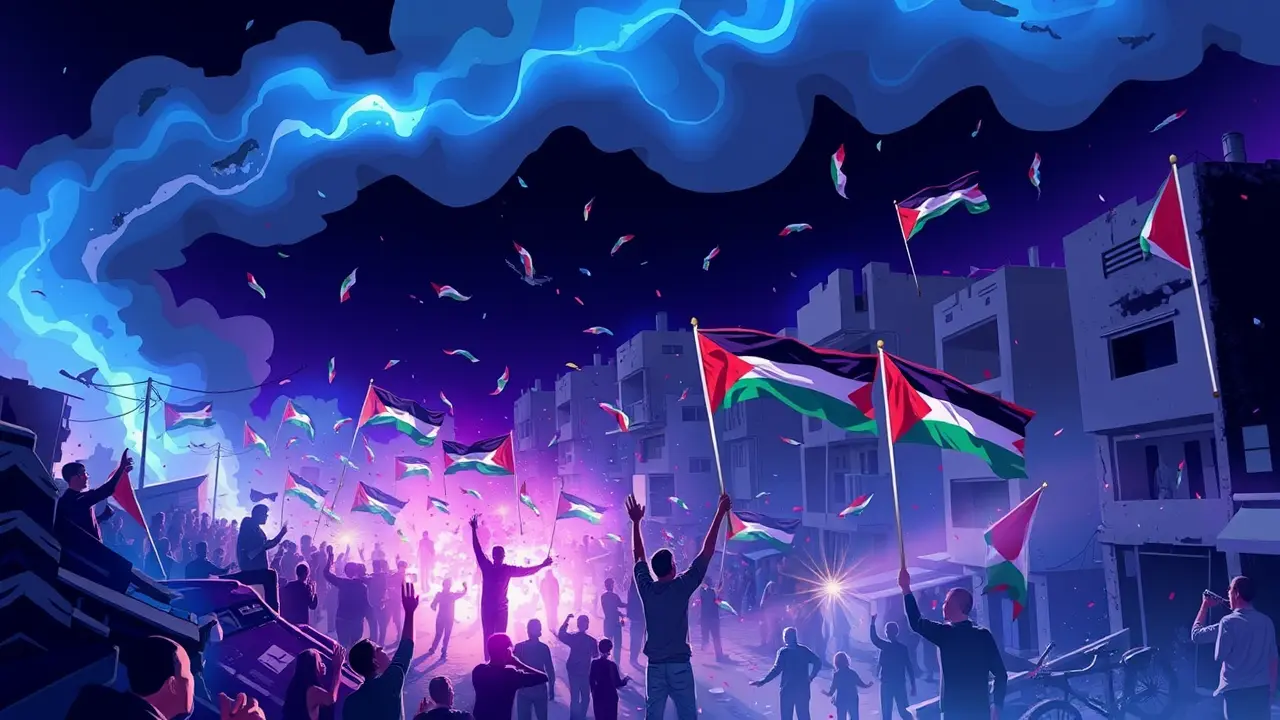Gaza Celebrates as Israel-Hamas Ceasefire Begins
A palpable wave of raw, unbridled relief washed over the Gaza Strip on Thursday, a stark and sudden counterpoint to the unyielding terror of the preceding weeks. As the ceasefire between Israel and Hamas took hold, the streets, so recently corridors of fear and destruction, transformed into rivers of humanity.From the shattered alleyways of Gaza City to the densely packed neighborhoods of Khan Younis, Palestinians poured forth not in a planned protest, but in a spontaneous, cathartic eruption of life. Young men, their faces etched with a fatigue far beyond their years, clambered onto the skeletons of bombed-out buildings, waving Palestinian flags that fluttered like defiant smiles against a smoke-stained sky.The air, so long thick with the acrid scent of explosives and dust, now filled with the chaotic, beautiful symphony of car horns, ululating cries of joy from women, and the shouts of children—children who, for a fleeting moment, could be just children again, their laughter a powerful antidote to the silence of sirens. This was not merely a pause in hostilities; it was a collective exhale for a population pushed to the absolute brink, a visceral, emotional response to the simple, profound gift of a quiet morning.The path to this fragile truce was a brutal one, paved with staggering human cost. For weeks, the world watched a grimly familiar cycle of escalation: rocket barrages from Hamas triggering devastating airstrikes from the Israeli Defense Forces, each round of violence digging the trench of animosity deeper.The conflict’s roots, of course, snake back through decades of failed negotiations, disputed land claims, and a mutual, deeply entrenched narrative of grievance and survival. This latest eruption, however, carried a particular intensity, fueled by clashes in Jerusalem and a bitter struggle over the holy site known to Jews as the Temple Mount and to Muslims as the Haram al-Sharif.The images that flooded social media and news networks—of Palestinian families sifting through the rubble of their multi-generational homes, of Israeli civilians sprinting for bomb shelters—created a global pressure cooker, with mediators from Egypt and Qatar working furiously behind the scenes to broker a deal that would, at least temporarily, stop the bleeding. Yet, even amidst the celebrations in Gaza’s streets, a sobering reality persists.The ceasefire, while halting the immediate bloodshed, does nothing to address the underlying pathologies of the conflict. The blockade of Gaza remains, a constant stranglehold on its economy and its people’s prospects.The political schism between Hamas, which governs the strip, and the Palestinian Authority in the West Bank continues to fracture any unified front. In Israel, the government faces scrutiny from a populace demanding long-term security, while right-wing factions will inevitably decry any perceived concession as a victory for terrorism.The reconstruction of Gaza will be a Herculean task, requiring billions in international aid and a logistical miracle, all while the specter of the next confrontation looms. As one elderly man in Jabaliya refugee camp told a reporter, his voice trembling with a mix of exhaustion and hope, ‘We are celebrating the quiet, but we know it is only a comma, not a full stop. ’ The true test begins now, in the difficult, unglamorous work of diplomacy that must follow the fireworks and flags, determining whether this ceasefire becomes merely another intermission in a tragic, recurring play, or the first, fragile step toward a more durable, and just, peace.
It’s quiet here...Start the conversation by leaving the first comment.
© 2025 Outpoll Service LTD. All rights reserved.
